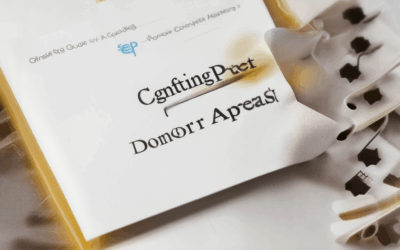In today’s digital age, social media has become a cornerstone for connecting with audiences, sharing stories, and driving impact. For nonprofit organizations, leveraging social media strategically can amplify their mission, foster community engagement, and secure vital donations and support. However, crafting an effective nonprofit social media strategy isn’t always straightforward. Many nonprofits struggle with limited resources, unclear goals, and the ever-evolving landscape of platforms like Facebook, Instagram, Twitter, and LinkedIn. Whether you’re just starting out or looking to refine your approach, this guide will walk you through the essential considerations and best practices to create a social media strategy that resonates with your audience and delivers results.
Key Takeaways
– Craft Compelling Content: Tailor social media posts to engage your audience with storytelling, updates, and fundraising efforts to reinforce your mission and build connections.
– Foster Engagement: Use social media to encourage interactions, feedback, and community building, enhancing supporter loyalty and advocacy.
– Leverage Strategic Platforms: Choose platforms like Facebook for community building, Twitter for rapid communication, Instagram for visual storytelling, and LinkedIn for professional networking to align with your goals.
– Optimize Posting Frequency: Aim to post 1-2 times daily, adjusting for smaller audiences to 2-3 times weekly, to maintain visibility and engagement without overwhelming followers.
– Focus on Quality Over Quantity: Prioritize high-quality, impactful content that resonates with your audience, whether through stories, updates, or visual media.
– Enhance Donor Relations: Regularly thank donors, celebrate volunteers, and promote events to strengthen trust and supporter loyalty.
– Adopt Effective Strategies: Balance content with thoughtful engagement, timely posting, and the use of visuals to maximize your nonprofit’s social media impact.

How Nonprofits Can Effectively Create Social Media Strategies
To establish a successful social media presence, nonprofits must align their efforts with clear objectives and a well-structured approach. Below are key steps to crafting an effective social media strategy:
- Define Clear Goals
- Understand your organization’s primary objectives, whether it’s raising awareness, driving donations, building community, or promoting advocacy campaigns.
- Align these goals with the platforms you choose to maximize impact.
-
Choose the Right Platforms
- Evaluate which social media platforms resonate most with your target audience. Key platforms include:
- Facebook : Ideal for community engagement and donor relations.
- Instagram/TikTok : Great for visual storytelling and reaching younger demographics.
- Twitter/X : Useful for quick updates, news, and advocacy.
- LinkedIn : Effective for networking with professionals and corporate partners.
- Tailor your content strategy to suit each platform’s unique features.
-
Create Compelling Content
- Develop high-quality, visually appealing posts that highlight your mission and achievements.
- Use storytelling techniques to share impactful stories that inspire action.
- Mix content types, including videos, infographics, testimonials, and event announcements.
-
Engage Your Audience
- Respond to comments and messages promptly to foster a sense of community.
- Host live Q&A sessions, webinars, or virtual events to connect with supporters.
- Use polls, quizzes, and surveys to encourage interaction and feedback.
-
Measure and Optimize
- Track key performance indicators (KPIs) such as follower growth, engagement rates, and website traffic.
- Use analytics tools to refine your strategy and identify what resonates most with your audience.
- Regularly update your content strategy based on performance data.
-
Stay Compliant and Professional
- Adhere to social media guidelines, especially regarding fundraising and promotional content.
- Maintain professionalism in all interactions to uphold your organization’s reputation.
- Avoid misleading or sensational content that could harm your brand.
-
Collaborate and Cross-Promote
- Partner with other nonprofits or influencers to expand your reach.
- Share relevant content from allies and cross-promote each other’s initiatives.
- Leverage partnerships to amplify your message and drive greater impact.
-
Innovate and Stay Relevant
- Keep up with emerging trends and technologies in social media.
- Experiment with new formats, such as Stories, Reels, or Pins, to explore what works best for your audience.
- Stay responsive to changes in algorithm rules to maintain visibility.
By following these steps, nonprofits can effectively leverage social media to achieve their mission-driven goals and build lasting connections with their supporters. For further insights and resources, visit NPO Expert to discover tailored strategies and tools for nonprofit success.
The 33% Rule for Nonprofits
The 33% rule for nonprofits pertains to the percentage of support received from the general public or government entities. Here’s a breakdown:
- Threshold Definition : Nonprofits are categorized based on the percentage of their total support originating from the public or government. Specifically, if an organization receives more than 10% but less than 33.333…% (one-third) of its support from these sources, it may qualify as a public charity under certain conditions.
- Public Charity Classification : To maintain public charity status, the nonprofit must demonstrate that, considering all facts and circumstances, a substantial portion of its support comes from public sources. This is typically documented on IRS Form 990, particularly in Schedule A and Schedule B, which detail contributions and grants.
- Compliance and Consultation : Nonprofits falling into this range should consult tax professionals to ensure compliance with IRS requirements. Proper classification is crucial to avoid penalties and maintain tax-exempt status.
This rule underscores the importance of understanding funding sources and ensuring adherence to IRS guidelines for nonprofits.

What is the 5 5 5 Social Media Strategy?
The 5-5-5 Social Media Strategy is a structured approach designed to maximize the effectiveness of your social media presence. This strategy focuses on five key pillars to ensure consistent, impactful, and measurable results across your social media channels.
1. Define Your Goals
Before implementing any strategy, it’s essential to define clear, achievable goals. Ask yourself:
- Are we aiming to increase brand awareness?
- Do we want to drive website traffic or generate leads?
- Are we looking to engage our audience or sell products/services?
Align these goals with your overall marketing objectives to create a cohesive strategy that delivers measurable outcomes.
2. Choose the Right Platforms
Not all social media platforms are created equal. Identify which platforms align best with your target audience and organizational goals. Key considerations include:
- Platform strengths (e.g., visual content on Instagram, professional networking on LinkedIn)
- Target audience preferences
- Content type that resonates most effectively
Examples:
- Instagram and TikTok for visual and video content
- LinkedIn for B2B connections and thought leadership
- Facebook for community building and customer support
3. Create Compelling Content
Content is the backbone of any successful social media strategy. Develop a content calendar that includes:
- High-quality images, videos, and infographics
- Written posts that tell stories, share expertise, and provide value
- Interactive content like polls, quizzes, and Q&A sessions
Consistency is key, but it’s equally important to tailor your content to each platform. For example, Twitter favors concise, timely updates, while Instagram emphasizes visually appealing posts.
4. Engage Authentically
Building relationships and fostering engagement is the ultimate goal. Respond to comments, messages, and mentions promptly. Encourage feedback and create opportunities for interaction through:
- Ask questions in posts to spark conversations
- Run polls or surveys to gather audience insights
- Host live events or webinars
Monitor engagement metrics to identify what resonates with your audience and adjust your strategy accordingly.
5. Measure and Optimize
Track key performance indicators (KPIs) to evaluate the success of your social media efforts. Common metrics include:
- Follower growth
- Engagement rate (likes, comments, shares)
- Website traffic driven by social media
- Lead generation from social media campaigns
Use analytics tools to review performance and make data-driven adjustments. Continuously test different content types, posting schedules, and platforms to refine your strategy and achieve better results.
By following the 5-5-5 Social Media Strategy, you can create a powerful online presence that drives meaningful interactions, builds brand loyalty, and supports your overall business goals.

What Should Nonprofits Post on Social Media?
- Engage your audience with storytelling and impact stories to showcase your mission and connect emotionally.
- Share updates and achievements to demonstrate transparency and accountability.
- Run fundraising campaigns and promotions to attract donations and support.
- Foster community engagement by encouraging interactions and feedback.
- Educate your followers with informative posts about your cause and industry trends.
- Highlight behind-the-scenes content to give a glimpse into your operations and team efforts.
- Announce collaborations and partnerships to strengthen your network and credibility.
- Thank donors and supporters publicly to build trust and loyalty.
- Recognize and celebrate your volunteers to acknowledge their contributions.
- Promote events and initiatives to increase participation and awareness.
- Maintain consistent posting schedules to keep your audience engaged and informed.
For more resources and strategies tailored to nonprofit organizations, visit NPO Expert .
How Many Times a Day Should a Nonprofit Post on Social Media?
The optimal number of social media posts for a nonprofit depends on factors like audience size, platform, and goals. Here’s a breakdown:
- General Recommendation: Nonprofits should aim to post 1-2 times per day . This frequency ensures consistent engagement without overwhelming followers. Platforms like Facebook may benefit from slightly fewer posts, around 2-3 times per week , according to Hootsuite’s Social Media Trends 2025 Report.
- Exception for Smaller Audiences: If your nonprofit has fewer than 10,000 followers, consider reducing posts to 2-3 times per week . This approach helps maintain high-quality interactions without straining your audience.
Additional Tips for Success
- Quality Over Quantity: Focus on creating engaging, high-quality content rather than increasing the number of posts. Share stories, updates, and achievements that resonate with your supporters.
- Engage Thoughtfully: Respond to comments and messages promptly to build trust and foster a sense of community with your audience.
- Timing Matters: Post during peak times when your audience is most active. This can vary by platform and audience demographics.
- Use Visuals Effectively: Include images, videos, and infographics to capture attention and make your content more shareable.
By balancing frequency with quality and relevance, your nonprofit can effectively communicate its mission and engage its supporters on social media platforms.

Best Social Media Platforms for Nonprofits
When determining the best social media platform for nonprofits, it’s essential to evaluate factors such as reach, engagement potential, and alignment with organizational goals. Here’s a breakdown of the most suitable platforms:
- Facebook : Ideal for building communities and raising awareness. Nonprofits can share stories, organize events, and engage volunteers effectively.
- Twitter : Excellent for rapid communication and global outreach. It’s perfect for issuing press releases, running campaigns, and sharing urgent appeals.
- Instagram : A visually driven platform that excels in storytelling. It’s great for showcasing impact, volunteer efforts, and attracting younger audiences.
- LinkedIn : Useful for professional networking and donor relationship-building. Share thought leadership content and connect with industry experts.
- YouTube : A powerful tool for video content, ideal for storytelling and education. Use videos to highlight achievements, educate supporters, and inspire donations.
- Pinterest : Often underutilized, Pinterest can drive traffic to your website through visually appealing infographics and project highlights.
- Email Marketing : While traditional, email remains highly effective for nurturing relationships and providing regular updates to your supporter base.
To maximize impact, many nonprofits combine platforms strategically. For instance, using Facebook for community engagement, Twitter for quick updates, Instagram for visuals, LinkedIn for professional networking, YouTube for storytelling, Pinterest for content promotion, and email for ongoing supporter interaction.
Ultimately, the choice depends on your nonprofit’s specific goals and target audience. Prioritize platforms that align with your mission and allow you to connect meaningfully with your supporters.





0 Comments